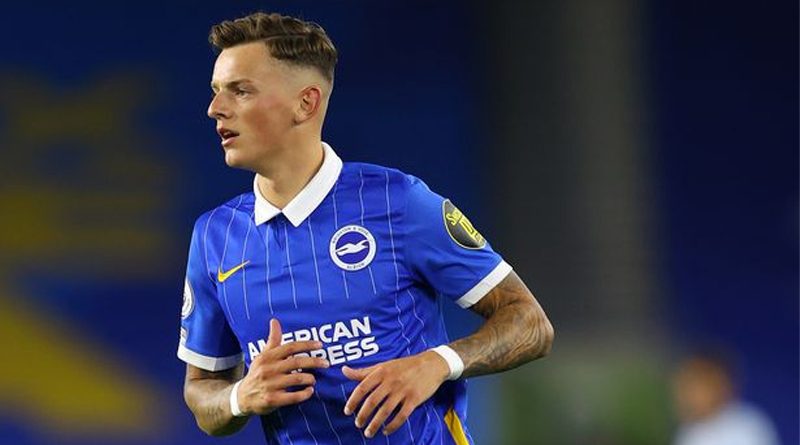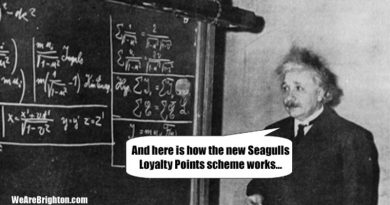A £24.1m profit and what else we learnt from Brighton 2021-22 accounts
Brighton & Hove Albion have released their 2021-22 accounts, turning a profit for the first time since their debut campaign in the Premier League.
The Seagulls made £24.1 million last season, a huge increase on the £50.4 million loss recorded through the 2020-21 campaign. The turnaround comes largely due to a combination of supporters returning to stadiums after Covid-19 and some significant player sales.
So significant in fact that Brighton brought in more through the transfer market in 12 months than they had in their entire 121 year history combined.
Having recorded losses of £270 million in their four previous completed seasons in the top flight, a return to profit is very welcome.
CEO Paul Barber has long spoken of the Brighton’s need to wean themselves off relying on Tony Bloom’s riches and this represents a small step in the right direction.
Bloom of course remains the chief benefactor having now pumped nearly half a billion pounds into the Albion. That is up £70 million on where his investment stood last season; one of the many interesting aspects on a balance sheet which looks good in places and not-so-good in others.
With thanks to the always-excellent Kieran Maguire from the Price of Football podcast, here is what we learned from Brighton & Hove Albion’s 2021-22 season accounts.
Brighton are reliant on player sales to be in the black
Two major player sales are included in the Brighton 2021-22 accounts. The departure of Ben White to Arsenal for £50 million and Dan Burn to the Saudi Sportswashers for £13 contributed hugely to the £68.3 million the Albion brought in through transfers.
Take that amount away and the £24.1 million profit becomes a £32.2 million loss. Food for thought for all those berating Tony Bloom for not reinvesting player income on replacements, such as the mythical 20 goal a season striker.
For Brighton to remain in the black, they need to keep selling one or two players every season before they can even think about spending transfer fees in excess of £25 million.
The good news is that the model of buying players with potential, polishing them into diamonds and then selling them for big money is currently working to a tee – as we will see in even greater glory next year.
Brighton’s 2022-23 accounts will include the £62 million Chelsea paid for Marc Cucurella, the £25 million Spurs paid for Yves Bissouma, the £25 million Arsenal paid for Leandro Trossard plus any big money summer sales which take place before June 30th 2023.
Chelsea paid £21.5 million for Graham Potter and his staff
Also on the 2022-23 accounts will be the compensation which the Albion received for Graham Potter. We now know this to be an eyewatering £21.5 million.
Under the Post Balance Sheet Events section of the Brighton 2021-22 accounts, it reads: “On 18 September 2022 the Club was delighted to appoint Roberto de Zerbi as its new head coach following the loss of Graham Potter and his team to Chelsea a few days earlier in a deal that saw the club receive a sum of £21.5m.”
Todd Boehly is even more mad than we first thought.
Transfer spend was the second highest in Brighton history
It came as something of a surprise that the 2021-22 accounts show Brighton spent the second highest amount in the club’s history.
£69.5 million was lavished on incoming transfers, beaten only by the 2018-19 season when the Albion forked out £77.9 million on the likes of Alireza Jahanbakhsh, Bernardo, David Button, Martin Montoya and the Lion of Judah Percy Tau, amen!
2021-22 incomings included Enock Mwepu for around £20 million, Cucurella for £15 million, Abdallah Sima for £7 million, Deniz Undav for £6 million and Kaoru Mitoma for £2.7 million.
Deals for Julio Enciso at £9 million and Simon Adringa at £6 million were also completed before the June 30th deadline, meaning they count as signings for last season on the balance sheet.
Turnover was up thanks to the Amex reopening to fans
The 2021-22 Brighton accounts were the first since the 2018-19 season to include an entire 38 game Premier League season played in front of supporters following the interruptions caused by Covid-19.
This led to a £28 million increase in turnover, up from £146 million in 2020-21 to £174 million in 2021-22. Matchday income was hugely increased from £494,000 when the Amex was left empty to £20.6 million as fans flocked back to buy tickets, beers and £3.20 bags of Starbust.
Broadcasting revenue also increased thanks to the Albion being shown on television more and receiving a greater share of the pie for finishing ninth in the Premier League table.
Commercial income increased by £7 million from £8.3 million to £15.3 million. We will watch that figure with particular interest next season to see just how much difference all our new-found Japanese friends can make to the accounts.
Brighton pay £3 million to Starlizard for transfer consultancy
The most interesting part of the 2021-22 Brighton accounts was to be found in the Related Party Transcations section.
Brighton paid £3 million to Starlizard for consulting services. Starlizard provide the algorithms and crunch the data which enables the Albion to find players like Mitoma and Caicedo in far flung corners of the world, sign them before anyone else and then sell them on for mega profit.
With the money Brighton are certain to make on the likes of those two and Alexis Mac Allister in the not-too-distant future, £3 million is an absolute steal.
Paul Barber is very well paid
WAB might have butted heads with him a few times over #ClickBait, Premier League PPV and other issues, but there can be no doubting the largely-excellent job which Barber does as CEO.
For his work in responding to every email no matter how mundane and having to sit through Fans’ Forums where supporters read poems to him complaining about mobile ticketing, Barber is paid £2.8 million per year.
This represented an £800,000 increase on his annual take home in 2020-21, which should enable him to buy plenty more mustard coloured jumpers.
Tony Bloom is owed nearly £499 million
If anyone wondered where Brighton would be without Bloom, then the fact he has invested the best part of £500 million of his own money into the club gives you a pretty good idea.
£90 million of that is in shares with £409 million in loans which – we hope – will not have to be repaid. Because in the unlikely event Bloom called in his owes, then Brighton would be up a famous brown creek without a paddle.
What has all that money gone on? The Amex, the American Express Elite Football Performance Centre, covering losses and bankrolling the player purchases that took Brighton from League One to the Premier League, standing on the verge of European football.
Bloom lent the club £70 million in 2021-22 to pay off a bank loan. His owes in the previous set of Brighton accounts for 2020-21 were a meagre £429 million.
More food for thought when the Albion do not sign a striker; it might be nice one day for Bloom to get a little bit of repayment towards the half a billion pounds he has ploughed into the club.
As we say at every review of Brighton’s finances, thank God for Tony. In Bloom we trust – because without him, Brighton would be nowhere.
Want to read more about the Albion’s accounts? Kieran has condensed the key takeaways into an excellent and informative Twitter thread here.




